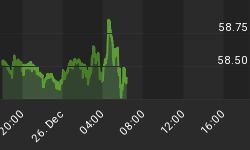One of the great gifts left to us by twentieth-century technician, George Lindsay, was his identification and categorization of what he called the standard time spans. He traced these time spans back to 1798 and found they occurred over and over again throughout time. They became an integral part of his methodology. Those time spans play an important role in telling us that the current bull market is about to end (or has ended already).
The current basic advance is counted from the low on July 2, 2010. Lindsay has a very sophisticated method of locating lows from which to count these advances (called basic cycles) but for the purposes of this article the simplest method is to note that an advance counted from the obvious low of March 9, 2009 to the most recent high in the Dow on September 20, 2012 is 1,291 days. A quick glance at the table of standard time spans below shows that an advance of 1,291 days does not fit into any of the time spans.
Counting from the July 2010 low to the most recent top in September is 811 days. By looking at the table we can see that this is a long basic advance and that the time span for a long basic advance is just about to expire. In other words, unless the advance off the July 2010 low is to be an extended basic advance (929-968 days), then the bull market either finished on September 20 or will be over by October 9 (830 days from the July 2010 low).
The obvious question is 'could the advance become extended?' For reasons spelled out in a Special Report dated 9/14/12, the odds of that happening are extremely low. However, any higher high in the Dow after 10/9/12 will be our signal that the advance is an extended basic advance and will not end before January 16, 2013 (day 929) at the earliest.

A full examination of the current equity market using the methods of George Lindsay including the standard time spans (as well as the Three Peaks and a Domed House and other models) is available for free. Send your request through the Contact Us page at Seattle Technical Advisors.com and reference this article.















